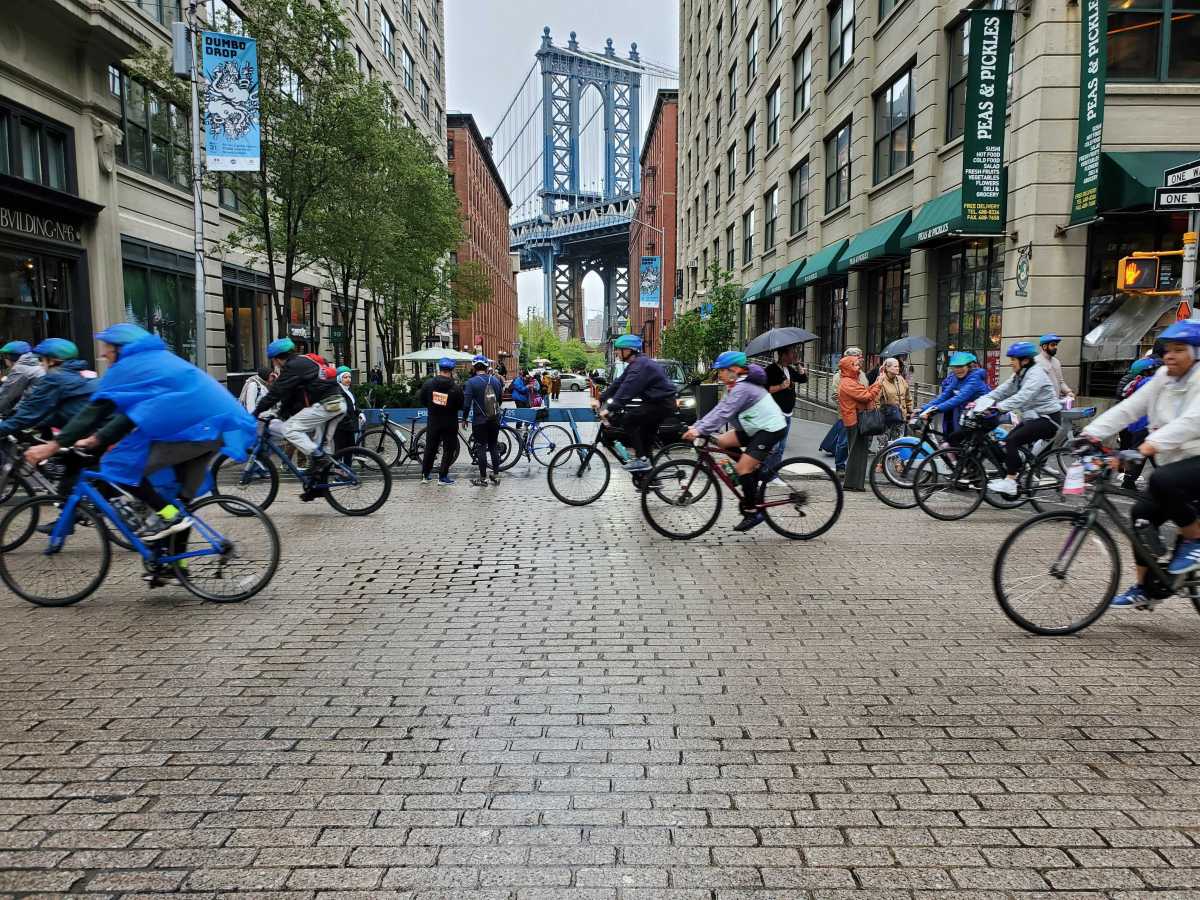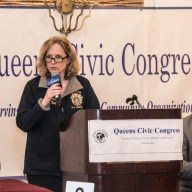The proliferation of highway billboards has…
By Dustin Brown
Outdoor advertising companies would be forced to reduce the size and number of their billboards in Queens and the rest of the city under a bill proposed last week by the City Council’s Committee on Land Use.
The proliferation of highway billboards has caused particular distress among Woodside residents, many of whom live along the Long Island Expressway, where the glare of billboard lights reflects into their windows.
The bill, co-sponsored by Councilman Walter McCaffrey (D-Woodside), responds to complaints by residents that a lack of regulation has allowed the signs to proliferate unchecked. The proposed legislation clarifies regulations governing the size, height, location and illumination of outdoor advertising, while stepping up the city’s ability to enforce billboard regulations.
Residents of Woodside applauded the City Council effort.
The billboards “are an eyesore to the community, and they therefore pull the community down both socially and economically because people move away,” said Cathryn Keeshan, co-president of the United 40 Civic Association in Woodside. “They do not wish to have glaring lights in their bedrooms and driveways,”
Residents complain that the billboards have changed the character of their neighborhood. “It looks like Vegas here,” said Woodsider Mary Leahy. “It used to be a residential section, and now it looks like Vegas.”
The comparisons don’t stop there. “This is not Coney Island,” said her neighbor, Dorothy Neary. “They’re going up like topsy, as they say. One after the other, unbeknownst to anybody.”
Half of the 200 signs currently lining the borough’s major highways have been put up since 1997, said Bruce Cory, spokesman for Eller Media Company, Infinity Outdoor, and Vista Media Group, the three largest outdoor advertising companies in the city. But many residents feel the trend has been even more recent than that.
“This came on like overnight,” said Leahy. “It happened since last summer — I’d say about nine months. Before then there could have been a few of them that you couldn’t notice, and they weren’t facing toward us.”
But Timothy Stauning, northeast regional president for Eller Media Company who speaks on behalf of all three large outdoor advertisers, said the sea of billboards that has flooded the highways since 1997 had not been erected by his group but rather by maverick companies trying to earn a quick buck.
“All that activity was a result of what we warned the city would happen, with entrepreneurs and others who saw opportunities to get involved in business that they were not involved in,” he said.
Stauning said his group has spent three years advocating the city for clearer regulations of the outdoor advertising industry.
“This was a proactive attempt on our part to bring some reasoning and bring what we would call control and regulation of the industry,” he said. “That dialogue really fell on deaf ears.”
Under the proposed bill, signs in manufacturing districts could not exceed 1,200 square feet, while those in residential areas must be limited to 250, said Jake Lynn, a spokesman for the City Council. Meanwhile, signs lining major highways could not come closer than 200 feet to the roadway.
The bill sets up a “voluntary compliance program” that allows companies to bring one-third of their signs into compliance every year for three years.
For many of Woodside’s elderly residents, however, the crackdown on billboard companies isn’t going far enough.
“Three years seems a lifetime to me at my age,” said Leahy, who was raised in the neighborhood and has lived there for 72 years. “I feel so bad because it takes away from the area. It’s embarrassing to look at it when you have relatives come to visit.”
While western Queens residents applauded McCaffrey and the City Council for addressing the billboard issue, outdoor companies were crying foul at what they feel is a sudden and unfair reversal of policies that have been in place for years.
Stauning said his company as well as Infinity Outdoor and Vista Media Group purchased their billboards at a time when the city gave its “tacit approval” by continuing to issue permits for the signs. His group wants the city to allow signs to remain standing if they were purchased before 1999, when the city finally defined standards for billboards lining the highways.
If the legislation is passed in its present form, the three advertising companies intend to litigate in an attempt to strike down the law.
“We anticipate that we would challenge the underpinnings of the law itself and the constitutionality of the law,” said Ethan Geto, spokesman for the companies.
“The city, by not compromising and working constructively with the industry, really didn’t do the public any favor, because our expectation is that none of these signs will come down for a long time,” he said.
If companies do not bring billboards into compliance, the city Department of Buildings would have the authority to tear them down.
Reach reorter Dustin Brown by e–mail at timesledgr@aol.com, or call 229-0300, Ext. 154.





























